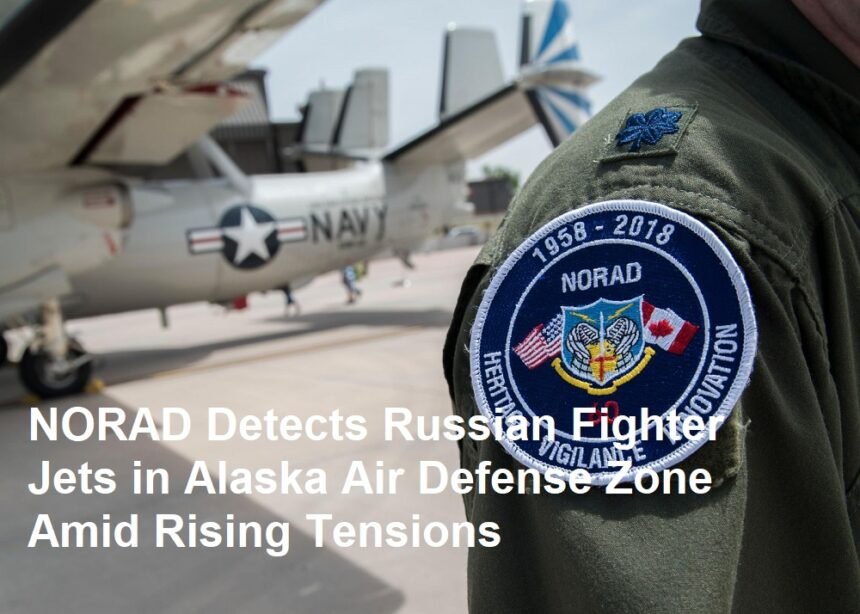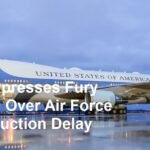The North American Aerospace Defense Command (NORAD) has confirmed that Russian fighter jets have been detected in the air defense zone over Alaska, marking one of the latest incidents that have heightened tensions between the United States and Russia. According to NORAD officials, the detection occurred during routine surveillance operations early this morning, prompting immediate monitoring and analysis by military experts.
In a statement released by NORAD, the organization said, “Our surveillance systems have identified the presence of multiple Russian fighter aircraft in the vicinity of the Alaska Air Defense Zone. At this stage, the aircraft appear to be operating in international airspace but are approaching our defensive perimeter.” Although no hostile actions have been reported at this time, the incident has sparked concern among military analysts who view it as a deliberate move to test the limits of U.S. air defenses.
This intrusion by Russian military aircraft near Alaska is not an isolated occurrence. Over the past several months, there have been multiple reports of Russian flights making close passes near U.S. territories, which have often been met with swift responses from NORAD. Military officials assert that these flights are likely intended as a show of force by Russia—a move designed to project power and challenge Western influence in the region. Analysts believe such maneuvers are meant to remind the world of Russia’s military capabilities and signal that no airspace is entirely free from their reach.
U.S. defense officials have confirmed that all necessary measures have been taken to ensure the safety and security of American airspace. “Our air defense systems are fully operational, and our pilots are on high alert,” said a NORAD spokesperson. “While we have not observed any aggressive behavior, we will continue to monitor the situation closely and take appropriate actions if required.” The spokesperson emphasized that this incident underscores the importance of maintaining robust surveillance capabilities in today’s uncertain geopolitical environment.
The detection of Russian fighter jets near Alaska comes amid a broader context of strained U.S.-Russia relations. Experts point out that this maneuver could be interpreted as a strategic signal from Moscow, intended to challenge American military readiness and complicate the geopolitical balance in the Arctic region. Alaska, serving as a critical gateway for U.S. military operations in the Pacific and the Arctic, is of immense strategic value; hence, the presence of foreign military aircraft in the area is being viewed with increasing alarm.
International responses to the incident have been mixed. Some analysts describe it as a routine demonstration of military capability, while others warn that it could escalate into a more serious confrontation if not handled with care. Although the U.S. government has yet to detail any potential diplomatic repercussions, officials suggest that all actions will be measured and calculated to avoid unnecessary escalation. Diplomatic channels remain open, as both nations work to balance displays of military strength with the need for dialogue.
This incident also raises important questions about the future of air defense in North America. With technological advancements making it easier to track and intercept potential threats, military strategists are increasingly focused on ensuring that NORAD and allied systems remain at the cutting edge of modern technology. Investments in advanced radar, communication, and surveillance systems are expected to accelerate in response to perceived threats from abroad, reinforcing the region’s defensive posture.
As the situation develops, NORAD has urged any additional foreign aircraft entering the Alaska Air Defense Zone to maintain a safe distance and comply with international aviation protocols. Both U.S. and allied forces are closely monitoring the skies, prepared to respond to any unexpected developments. For now, the detection stands as a sober reminder that vigilance and readiness are essential in a world where geopolitical tensions can flare up suddenly.
In summary, the detection of Russian fighter jets in the Alaska Air Defense Zone is a clear reminder of the persistent challenges facing global security. As both sides navigate this complex and volatile environment, the importance of technological superiority, constant vigilance, and proactive diplomatic engagement has never been more critical. NORAD’s latest report serves as both a warning and a call to action for policymakers and military leaders alike.













